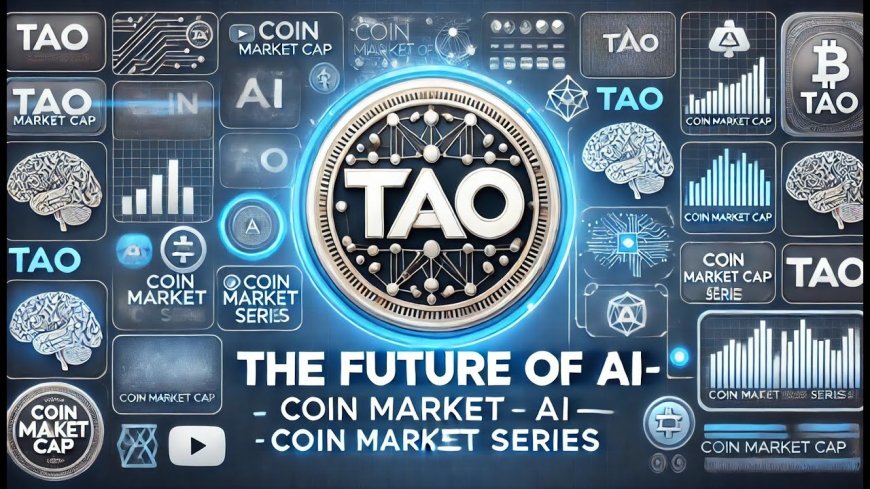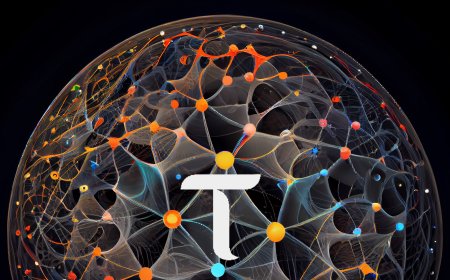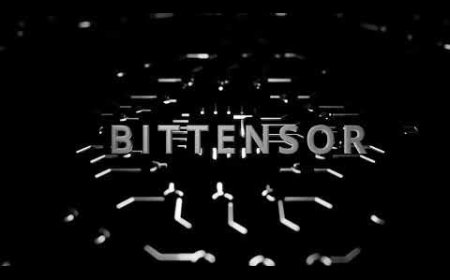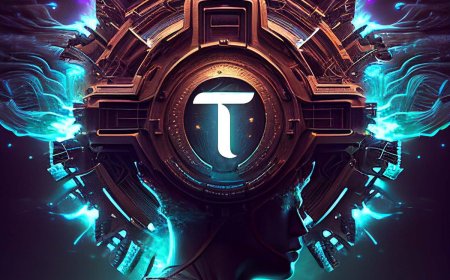Bittensor's Text Prompting Subnet: Lessons Learned and Future Directions for Decentralized AI
Bittensor's text prompting subnet has been at the forefront of the project's efforts to create a decentralized artificial intelligence network. Over the past few months, the subnet has undergone significant development and testing, providing valuable insights into the challenges and opportunities of building a decentralized AI system. This article explores the key lessons learned from Subnet One and outlines future directions for improvement.

The Current State of Subnet One
Subnet One, Bittensor's text prompting subnet, has made remarkable progress in several areas:
- Synthetic Data Generation: The subnet has produced over 100 billion tokens of synthetic data in just five months, creating a vast resource for AI research and development. This massive dataset, spanning over 600 gigabytes, represents a significant achievement in decentralized AI data creation.
- Miner Participation: With over 22 million validation steps and more than 120,000 hours of collective validation time, the subnet has demonstrated strong engagement from the community. This level of participation underscores the potential of decentralized networks in harnessing collective computational power.
- Increasing Response Rates: Successful completion rates have been steadily rising, indicating improvements in the network's overall performance. This trend suggests that miners are adapting and improving their models over time.
- Diversity of Responses: The network has shown a consistent increase in the uniqueness of completions, with nearly 100% diversity among non-zero scored responses. This diversity is crucial for generating a wide range of useful and creative outputs.
- Reward Improvements: Completion rewards have been consistently increasing, demonstrating the miners' ability to adapt to changes in the incentive landscape. This adaptability is key to maintaining a competitive and evolving network.
Despite these achievements, the subnet faces several challenges that need to be addressed to ensure its continued growth and effectiveness.
Key Challenges and Lessons Learned
1. Misalignment Between Reward Models and Human Preferences
One of the most significant findings from recent evaluations is the misalignment between the subnet's reward models and human preferences (as approximated by GPT-3.5 and other models). Correspondence tests revealed that the rankings produced by the reward models had little correlation with those generated by more advanced language models.
This misalignment poses a serious challenge to the network's ability to produce genuinely useful and high-quality outputs. It suggests that the current reward models may be incentivizing behaviors that don't necessarily align with real-world user expectations or needs.
Lesson: Regular evaluations, including human evaluations and correspondence tests with state-of-the-art models, are crucial to ensure the reward landscape aligns with desired outcomes. These evaluations should be an ongoing process, allowing for continual refinement of the reward models.
2. Overspecialization and Exploitation
The current validation process, which is highly structured and predictable, has led to miners developing strategies that exploit the reward system rather than focusing on generating high-quality, versatile responses. This overspecialization results in miners that perform well within the confines of the validation process but may struggle with more diverse or real-world tasks.
Examples of exploitation include:
- Miners using template responses that score well but lack genuine understanding
- Focusing on specific keywords or patterns in prompts rather than comprehending the full context
- Developing strategies to game the scoring system without improving overall AI capabilities
Lesson: The validation process should more closely mimic real-world user interactions, introducing variability and unpredictability to discourage exploitation and encourage genuine improvements in AI capabilities. This may involve:
- Implementing more diverse and dynamic prompts
- Introducing multi-step or context-dependent tasks
- Regularly updating the validation process to stay ahead of exploitation strategies
3. Benchmarking Reveals Performance Gaps
Benchmarking tests on datasets like ARC and TruthfulQA showed that while some miners performed exceptionally well, there was a wide distribution of scores, with many miners performing poorly on out-of-distribution tasks. This performance gap highlights several issues:
- Some miners may be overfitting to the specific requirements of the subnet's validation process
- The network may not be encouraging the development of well-rounded AI models
- There's potential for significant improvement in overall network performance
Lesson: Regular benchmarking across diverse tasks is essential to understand the true capabilities of the network and identify areas for improvement. This benchmarking should:
- Include a wide range of tasks beyond the subnet's primary focus
- Be regularly updated to prevent miners from optimizing for specific benchmarks
- Inform the development of more comprehensive validation processes

4. Data Quality vs. Quantity
While the subnet has generated an impressive volume of synthetic data, questions remain about its overall quality and usefulness for AI training. The focus on quantity may have come at the expense of ensuring consistent high quality across the dataset.
Lesson: Future development should focus on refining the quality of generated data, potentially sacrificing quantity for higher-quality, more thoroughly vetted outputs. This may involve:
- Implementing more stringent quality checks
- Developing methods for filtering and curating the generated data
- Exploring ways to incentivize the production of high-quality, diverse data
Future Directions for Subnet One and Bittensor
Based on these lessons, several key areas for improvement and future development have been identified:
1. Revamping the Validation Process
The subnet will move towards a more dynamic, unpredictable validation process that better mimics real-world user interactions. This change will help discourage exploitation and encourage the development of more versatile and capable AI models.
Proposed changes include:
- Introducing a wider variety of task types and formats
- Implementing context-dependent tasks that require broader understanding
- Regularly updating the validation process to prevent miners from developing static strategies
2. Implementing Relative Scoring
Instead of using absolute reward scales, the subnet will explore relative comparison methods for scoring miner outputs. This approach creates an open-ended improvement landscape, continually pushing miners to outperform their peers.
Benefits of relative scoring:
- Encourages ongoing improvement rather than reaching a fixed performance ceiling
- Reduces the impact of potential biases in absolute scoring methods
- Allows for more nuanced evaluation of miner performance
3. Enhanced Exploitation Detection
New, adaptive methods for detecting and preventing exploitation are being developed. These systems will evolve with the network, identifying new forms of cheating as they emerge.
Key features of the new exploitation detection system:
- Machine learning models trained to identify suspicious patterns in miner outputs
- Regular analysis of network-wide trends to detect coordinated exploitation attempts
- Adaptive thresholds that adjust based on overall network performance
4. Streaming Completions
The introduction of streaming completions will allow miners to submit responses token by token, reducing the risk associated with generating longer, more detailed responses and encouraging higher-quality outputs.
Advantages of streaming completions:
- Enables more natural, human-like response generation
- Allows for real-time evaluation and adjustment of responses
- Reduces the penalty for miners attempting more complex or lengthy outputs
5. Regular Evaluations and Benchmarking
Ongoing evaluations, including correspondence tests and diverse benchmarking tasks, will become a standard part of subnet maintenance and development.
The evaluation process will include:
- Regular comparison of network outputs against state-of-the-art models
- Diverse benchmarking tasks covering a wide range of AI capabilities
- Human evaluation to ensure alignment with real-world expectations
6. Focus on Data Quality
Future development will prioritize the quality of synthetic data over sheer quantity, implementing multi-round validation processes to ensure the data's usefulness for AI training and research.
Strategies for improving data quality:
- Implementing more sophisticated filtering and curation processes
- Developing metrics for assessing the diversity and utility of generated data
- Exploring ways to incentivize the production of high-quality, task-specific data
Implications for Subnet Developers and the Bittensor Ecosystem
The lessons learned from Subnet One offer valuable insights for developers working on other subnets within the Bittensor ecosystem:
- Robust Incentive Mechanisms: Developers should design incentive mechanisms with adversarial robustness in mind, anticipating potential exploits. This involves:
- Conducting thorough game-theoretic analyses of proposed mechanisms
- Implementing safeguards against common exploitation strategies
- Regularly reviewing and updating incentive structures
- Data Visibility: Implementing tools for monitoring and analyzing network outputs is crucial for maintaining quality and identifying issues. Key considerations include:
- Developing user-friendly dashboards for real-time network monitoring
- Implementing automated alerts for anomalous behavior or performance drops
- Ensuring data privacy and security while maintaining necessary transparency
- Continuous Evaluation: Regular assessment of subnet performance against predefined goals and external benchmarks is essential for long-term success. This involves:
- Establishing clear performance metrics and goals for each subnet
- Conducting regular internal and external audits of subnet performance
- Adjusting subnet parameters and mechanisms based on evaluation results
- Adaptability: Subnet designs should be flexible enough to allow for rapid adjustments to incentive mechanisms and validation processes as needed. This can be achieved by:
- Implementing modular designs that allow for easy updates to specific components
- Developing governance mechanisms for proposing and implementing changes
- Maintaining open communication channels with the miner and validator communities
The Role of Community in Subnet Development
The success of Subnet One and future subnets within the Bittensor ecosystem heavily relies on the active participation and collaboration of the community. Key aspects of community involvement include:
- Miner Innovation: Encouraging miners to develop novel approaches and models that push the boundaries of AI capabilities within the network.
- Validator Engagement: Fostering a community of dedicated validators who actively contribute to network security and output quality.
- Developer Contributions: Creating an environment where developers can easily contribute to subnet improvements and create new applications on top of the network.
- Feedback Loops: Establishing effective channels for community feedback and incorporating this input into the development process.
Challenges in Decentralized AI Development
While Bittensor's approach to decentralized AI shows great promise, it also faces several challenges common to decentralized systems:
- Coordination: Ensuring that the diverse group of participants works towards common goals and maintains network cohesion.
- Quality Control: Maintaining high standards of output quality in a decentralized environment where participants have varying levels of expertise and resources.
- Scalability: Addressing potential bottlenecks in network performance and governance as the system grows.
- Regulatory Compliance: Navigating the complex and evolving regulatory landscape surrounding AI and decentralized systems.
Conclusion
Bittensor's text prompting subnet has made significant strides in creating a decentralized AI network, generating vast amounts of synthetic data and fostering a competitive ecosystem of miners and validators. The challenges identified through recent evaluations highlight the need for ongoing refinement and adaptation, but they also demonstrate the immense potential of this approach to AI development.
By implementing more sophisticated validation processes, focusing on data quality, and maintaining a rigorous evaluation regime, Subnet One is poised to overcome its current limitations and move closer to its goal of creating a truly decentralized, high-quality AI resource.
The lessons learned from this subnet will not only drive its own improvement but also inform the development of other subnets within the Bittensor ecosystem. As the project continues to evolve, it remains at the forefront of decentralized AI development, pushing the boundaries of what's possible in this rapidly advancing field.
The future of Bittensor's text prompting subnet, and the project as a whole, looks promising. With a committed community of developers, miners, and validators working together to refine and expand the network's capabilities, Bittensor is well-positioned to play a significant role in shaping the future of decentralized artificial intelligence.
As the AI landscape continues to evolve at a rapid pace, Bittensor's approach offers a unique and potentially transformative model for AI development. By harnessing the power of decentralization and community-driven innovation, the project has the potential to democratize access to advanced AI capabilities and drive breakthroughs in the field.
The journey of Subnet One serves as a valuable case study in the challenges and opportunities of decentralized AI development. As the project moves forward, it will undoubtedly continue to provide insights that will benefit not only the Bittensor ecosystem but the broader AI and blockchain communities as well.
Source : @The Bittensor Hub.















